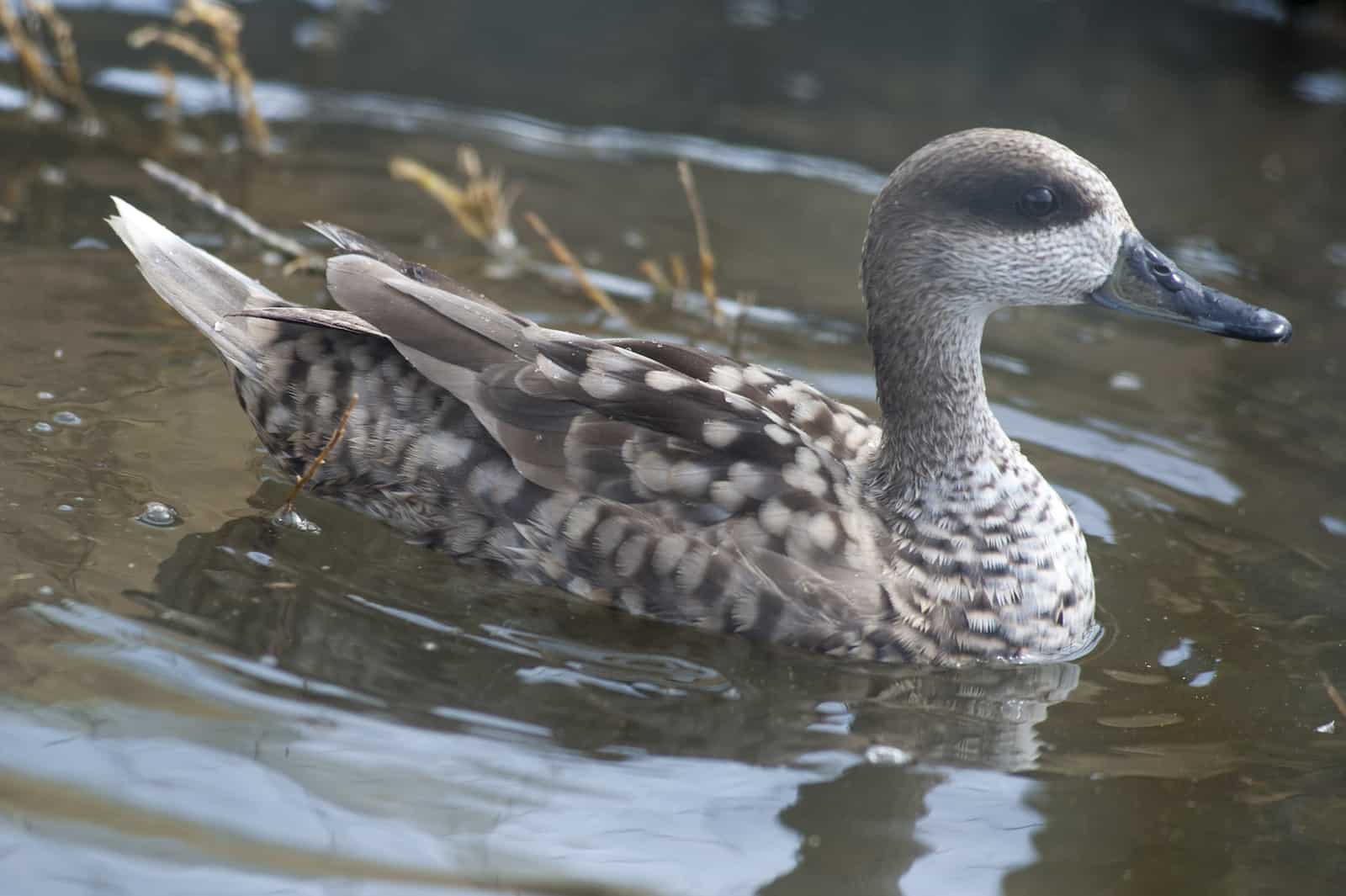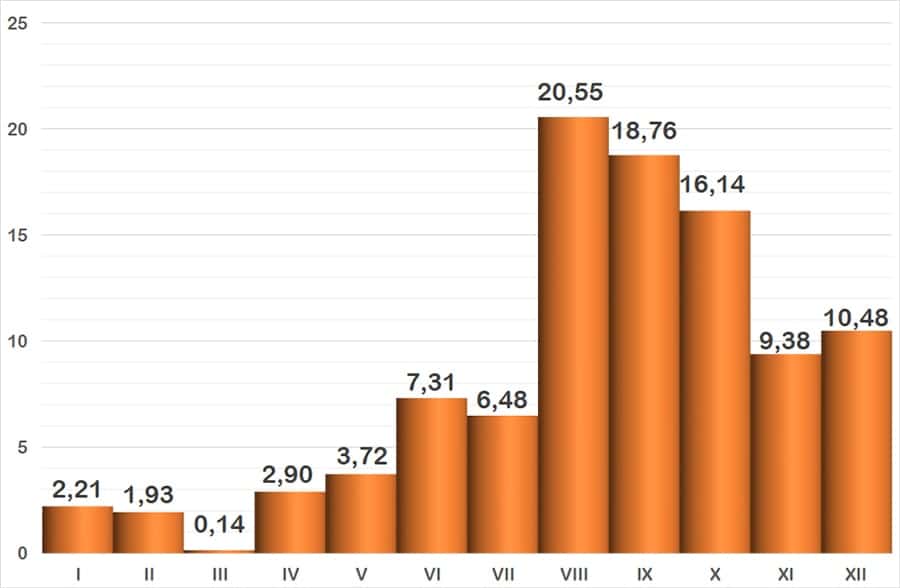It is a small swimming duck, with a light sandy-brown colouring with lighter patches. It has a slender appearance. They have a dark spot in the form of a mask. The female differs from the male in that it lacks the characteristic crest of feathers common to the latter.

Species 1
Marbled Duck
Scientific name
Family 2
Taxonomic Affinity Group 3
Phenology 4
It should be noted that this is the most endangered duck in Europe.
It can be seen all year round in the ‘Cerrillos’ salt flats. It nests there and, in some years, has nested in the ‘Ribera de la Algaida’.
Its wintering population is considered is considered to be very scarce and concentrated, but it does not disappear from the salt marshes during this period, in fact, it is easily watched in the winter months.
The most likely time to encounter them is during the postnuptial migratory passage, between August and October.

The graph represents the probability of seeing a species during the year, grouped into months. The vertical axis indicates the percentage value. Each of the bars expresses its value. The horizontal axis represents the months: I = January, II = February, III = March, IV = April, V = May, VI = June, VII = July, VIII = August, IX = September, X = October, XI = November and XII = December.
Observation recommendations
It is easily spotted in the old salt flats; from Avda. de Cerrillos it is not uncommon to come across it. It can be seen in the ‘Gravera’, although it is very scarce, and it can also be seen in the ‘Ribera de la Algaida’. It is also common in the ‘Salinas Nuevas’.
Observation areas where we can find it
Notes
[1] The names used are from the list of birds of Spain, drawn up by SEO/BirdLife and updated to 2019 (https://seo.org/listaavesdeespana/). The reference is: Rouco, M., Copete, J. L., De Juana, E., Gil-Velasco, M., Lorenzo, J. A., Martín, M., Milá, B., Molina, B. & Santos, D. M. 2019. Checklist of the birds of Spain. 2019 edition. SEO/BirdLife. Madrid.
[2] The taxonomic family to which it belongs is indicated.
[3] Traditionally, waterbirds have been grouped according to their taxonomy or “taxonomic affinity”, i.e., when some birds coincide in certain features that allow them to be classified scientifically, but without leaving the rigour of science, they are put together in these groups so that they can be easily recognised. These groups are the following: Greves (belonging to the Podicipedae family), Herons and Similar (includes the families: Ardeidae -Herons- Ciconiidae -Storks- and Threskiornithidae -Ibises and spoonbills-), Ducks (the whole Anatidae family), Coots and Similar (the family Rallidae corresponding to Rails, Gallinules and Coots), Cranes (also with only one family, the Gruidae), Waders , a heterogeneous group, the most diverse of this classification, includes the families Burhinidae (Stone-curlews), Haematopodidae (Oystercather), Recurvirostridade (Avocets and Stilts), Glareolidae (Pranticole), Charadriidadea (Plovers), Scolapacidae and finally Gulls and Similar (the recently unified family Laridae, i.e. Gulls and Terns).
[4] Phenology studies the relationship between the cycles of living beings and meteorological factors, and in our latitude these factors manifest themselves as variations throughout the year, thus relating the seasons to the birds’ cycles (breeding, migratory journeys, etc.) The graph shows the probability of seeing a bird depending on the month. It uses data from 48 bird censuses carried out between October 2016 and September 2018. The method used is that of a census route with sampling stations, with a total count on the sheet of water.
